- News
- Reviews
- Bikes
- Components
- Bar tape & grips
- Bottom brackets
- Brake & gear cables
- Brake & STI levers
- Brake pads & spares
- Brakes
- Cassettes & freewheels
- Chains
- Chainsets & chainrings
- Derailleurs - front
- Derailleurs - rear
- Forks
- Gear levers & shifters
- Groupsets
- Handlebars & extensions
- Headsets
- Hubs
- Inner tubes
- Pedals
- Quick releases & skewers
- Saddles
- Seatposts
- Stems
- Wheels
- Tyres
- Tubeless valves
- Accessories
- Accessories - misc
- Computer mounts
- Bags
- Bar ends
- Bike bags & cases
- Bottle cages
- Bottles
- Cameras
- Car racks
- Child seats
- Computers
- Glasses
- GPS units
- Helmets
- Lights - front
- Lights - rear
- Lights - sets
- Locks
- Mirrors
- Mudguards
- Racks
- Pumps & CO2 inflators
- Puncture kits
- Reflectives
- Smart watches
- Stands and racks
- Trailers
- Clothing
- Health, fitness and nutrition
- Tools and workshop
- Miscellaneous
- Buyers Guides
- Features
- Forum
- Recommends
- Podcast
 2021 BMC Teammachine SLR Two - riding 5.jpg
2021 BMC Teammachine SLR Two - riding 5.jpgHow to maximise your fitness when you get to 40+
As you get older, there are ways to adapt your riding so that you can make the most of your in-the-saddle time for getting fit and going fast. Everyone is different; your experience and fitness background will dictate what you are capable of as you get older, and as always, we all respond differently to training, but understanding the changes that happen to our bodies as we age can guide a better approach for making the most of your riding, and enjoying it too.
> Discovering cycling in your 40s - how to unlock talents you never knew you had
Some of this advice will help you optimise the physical adaptations from each bike ride, while other bits are important for avoiding injury so you can still ride your bike as and when you like.
For this expert advice, we spoke to ABCC Level 3 accredited coach Simon Beldon of Matt Bottrill Performance Coaching and Chartered Physiotherapist Nichola Roberts of Velophysio.
You tend to turn into more of an endurance rider as you get older, better suited to longer distances at a lower intensity. This means that intense sessions are even more important to pack in. Strength training and a protein focus can help delay muscle wastage, while conditioning, flexibility and bike fits become more important so you can continue having fun on the bike.
For more on this, continue reading…
Focus on anaerobic and VO2 work
“Everyone is different so will need a different approach depending on their background and current situation,” Simon of Matt Bottrill Performance Coaching cautions.
“But usually you find with older athletes that if they’ve got history in the sport, with a good endurance in place already, it’s their anaerobic capacity and VO2 max that’s missing.
“Your very top end is one of the first things you lose as you get older.”
Sprinting is your anaerobic capacity and includes efforts somewhere between 30 seconds and two minutes, Simon notes, while VO2 efforts are anywhere from about two minutes to about eight minutes.
As these areas of your fitness are in decline, it’s worth devoting more training time to shorter, harder efforts.
> How to get the most from your limited training time
One good way of achieving this is to have a polarised training plan, with roughly 70-80% of the workouts at low intensity (easy) while the remaining 20-30% of sessions are completed at a high intensity (hard). This essentially skips out the middle zones and allows you to focus on giving it your all on the hard days.
Out on the road, Simon recommends doing max efforts on hills. “Plan a route with some hills and do an effort as hard as you can, recover, then do it again on the next hill, and repeat.”
> 12 of the best indoor cycling apps - get the right turbo training experience for you
More specific workouts for targeting these two areas indoors can be found on online training platforms such as Zwift and the Sufferfest.
> 12 of the best smart home trainers for 2021 — get fit indoors
While you can adjust your training to help maintain your all-round fitness including your tippy-top end, if you are looking to target an event, choose longer endurance ones for your best chance of success – generally speaking, of course.
“There’s not so much of a drop off in endurance performance," says Simon. "Older riders are able to maintain and hold onto their fitness for longer events.”
Don’t neglect rest
Recovery is as important as it’s always been, so don’t go crazy with all the ultra-hard anaerobic- and VO2- focused workouts all of the time.
Check out our full guide on how to maximise your recovery here with pointers on refuelling, rehydrating, what it means to go on an actual recovery ride, along with a look at the effectiveness of compression garments, as well as bicarb and cherry supplements.
How much recovery time you require depends on the fitness level as well as the broader lifestyle of the individual, Simon notes.
> How to make the most of riding solo: get maximum benefits from training alone
As well as recovering from time on the bike, if you have a stressful and busy life Simon says you need to be conscious about everything you’re doing day to day to make sure that you are getting the rest that’s needed, so you can perform when it’s riding time.
“All our stress adds to the body and can have an impact on training,” Simon says.
An essential part of the recovery process for physical and mental health is getting adequate amounts of sleep, both in quality and quantity, and this is an area that’s often underestimated, Simon warns.
“As we get older, we seem to get less sleep. With so many things going on in our lives, older riders tend to get up early to do training or neglect their sleep pattern.
“But sleep is one of the things that can really enhance performance, so as an athlete you need to make sure you’re getting at least seven hours of sleep per night.”
Simon recommends having a look at your sleeping habits, to make sure that everything is in place so you can make the best of your riding and the time you have available.
As part of our recovery guide, we have included a section on steps for ensuring good sleep hygiene, as explained by University of Loughborough PhD Sleep Psychology researcher Rui Pereira. Creating routines, avoiding electronic devices leading up to going to bed, as well as getting decent exposure to natural light as you wake, can all help.
Studies also point to avoiding training early in the morning or late at night to allow for sufficient sleep and recovery opportunities
Also, in our feature exploring the most effective time of day for training, chronobiologist Professor Ben J. Edwards of Liverpool John Moores University says that in terms of muscular performance humans are stronger between 5pm and 8pm.
> 11 top tips for training in the dark: make the most of your winter off-season
But alongside this Ben advises that it’s more important to complete your session at least three to four hours before you want to get some sleep, to avoid the endorphin rush and adrenaline that can make it difficult to fall asleep, and causes sleep deprivation.
Protein becomes key
Although generally it can be harder keeping the weight off as you get older, Simon stresses it’s still essential that you get enough carbs if you’re training regularly so that you can recover and replace the glycogen that you’re losing when you’re exercising.
Alongside this, protein becomes a more important part of your fuelling strategy, says Simon.
> Reviews of energy and recovery drinks can be found here
As a result of muscle loss as you get older, it’s crucial to get about 0.5 grams per kilo of body weight of protein, about four to five times a day.
“This can help maintain your muscle which you can lose if you’re not careful.”
Off-the-bike work is crucial
“Strength training and conditioning really helps you continue riding,” says Chartered Physiotherapist Nichola Roberts. “It’s easier to neglect as you get older but it’s actually the most important time to be doing it.
“You simply can’t replace strength training with doing more cycling, you need to be doing it off the bike and in the gym.”
For women, this is crucial as soon as they hit menopause, Nichola explains. For men, it’s more into their 50s and 60s.
“As you get older you start to lose bone density and muscle strength,” explains Nichola. “As you lose muscle strength it means that your postural muscles are not necessarily working as well.
“It’s really important to build muscle strength off the bike to prevent those postural changes happening on the bike.”
Doing this strength training and some impact work off the bike also helps prevent loss of bone density, Nichola adds.
“At a base level, walking and running do some good, and even activities like tennis and dancing–just anything where you’re actually putting impact through the body in some way," says Nichola.
“But doing loaded strength training is best. By that, I mean weight training in a gym. The muscle pulls on the bone and it encourages osteoblast activity which creates more bone density.”
> Cycling can make your bones brittle; here's how to stop it
This should be done three times a week, with the focus on strength with loads.
Simon recommends starting with core exercises and then as you get stronger moving onto more specific weighted lifts such as squats and deadlifts.
“It’s important to up the weight, so doing max rep efforts, rather than increasing the number of reps,” says Nichola.
For the postural side of it, Nichola adds that other activities such as pilates and bodyweight exercises are definitely beneficial. But for making changes to your muscles and your bones, heavier weights are needed.
Joint and bone supplements can also be beneficial for staying strong and flexible for longer. Phd Nutrition has its Life - Move offering (in powder and capsule form) that’s designed to support your bone and connective tissue strength for maintaining mobility and reducing the chance of injury.
It packs in a combination of hydrolysed collagen with Vitamin C for collagen formation as well as glucosamine and chondroitin with turmeric and BioPerine to help reduce inflammation in the joints. The formula also includes Vitamin D, K and Calcium for bone and muscle support.
Check up on your riding position regularly
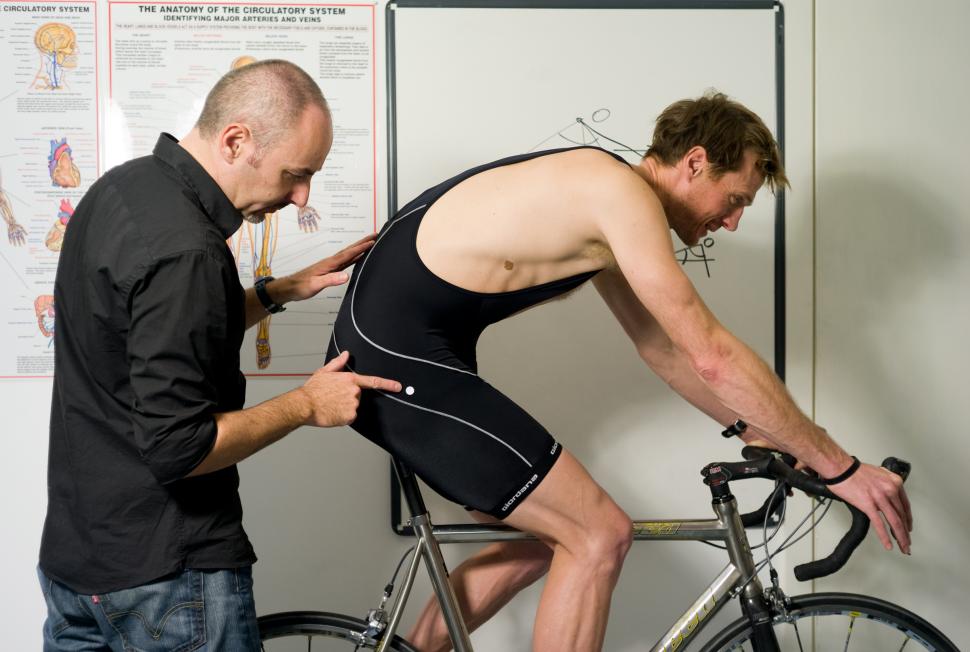
Your ligaments and joints start to decondition past the age of 30, Nichola explains.
“It’s important to do things to protect them. You’re more likely to have a back problem that lasts for longer, and the same for knees.”
> How to make your bike more comfortable - check out our 14 tips
Getting bike fits and checking up on your riding position on the bike regularly is sensible because as we age our posture alters.
“If you had a bike fit several years ago, it’s probably worth having another one as your flexibility can change.
“Having a bike fit makes sure you’re comfortable and that you’re not putting anything under stress.”
> Should you get a bike fit? The 9 pitfalls to avoid
Don’t be afraid to make changes that differ from what was optimal when you were younger.
“If you used to race in a completely aggressive and slammed position, you may want to be slacker and sitting back a little bit,” Nichola says.
Increase your cadence and use easier gears

Paying attention to your gear selection and cadence is very important as you get older. Keeping your cadence high helps reduce the risk of injury.
> Cycling cadence: how fast should you pedal?
“Cycling is relatively good for knees generally, in terms of the knee joint itself,” Nichola notes. “However if you are cycling constantly on erg mode on a smart trainer and you’re riding up mountains on platforms such as Zwift, you’re doing low geared, low cadence efforts—these can be really negative for your joints and can cause knee problems.
“It’s really important that the gearing is easy for what you’re doing and to avoid erg mode on low cadence efforts,” Nichola emphasises.
Riding indoors on a smart trainer it’s easier to slip into putting too much strain through your knees.
Nichola explains: “When you’re outside on your bike, you just move your body a lot more. You might get out of the saddle, you just adapt to what your body needs. Whereas on erg mode riders just tend to push through it—it’s not very natural.”
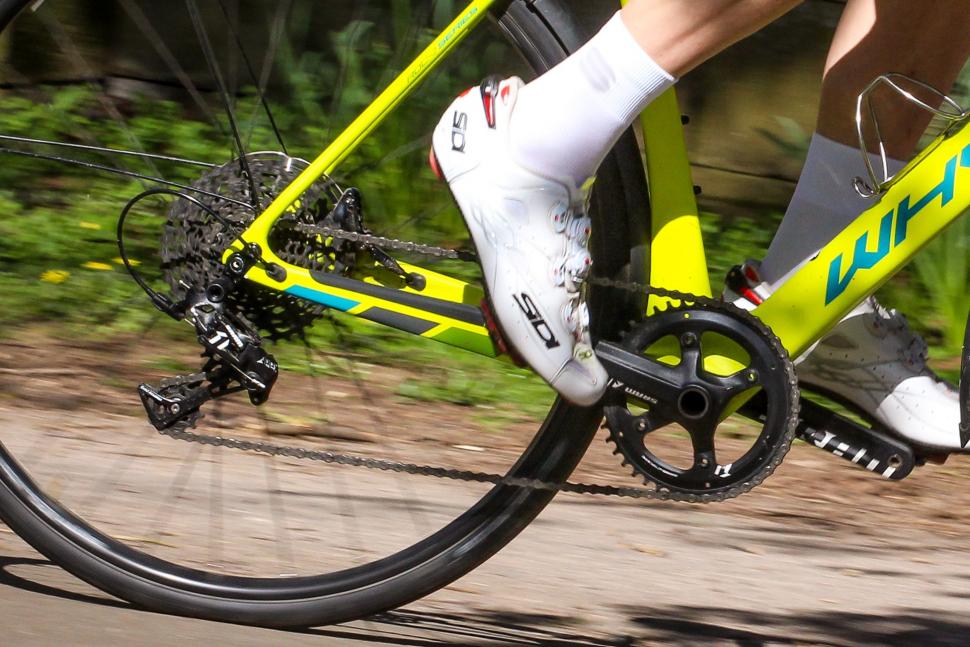
While problems are more likely to be caused by grinding it on erg mode inside, it’s also a sensible idea to change your cassette to one with larger sprockets to get some easier gears for spinning up steep slopes outside.
Work on your flexibility
Focusing on flexibility, particularly spinal flexibility, is really important, especially if you have a job that involves sitting at a desk all day.
As you age you become stiffer and gradually your range of movement decreases.
“You really want to do more flexibility exercises as you get older to try to maintain the ability to bend over comfortably in the riding position, rather than seizing up—the more you can do, you can sort of interrupt the process,” says Nichola.
Following yoga practices or doing any exercises where you’re moving into extension are beneficial, says Nichola.
“One exercise is lying on a foam roller with it lengthwise down your spine, in a crucifix position with your arms are out wide so you are stretching through your chest.”
Then there’s thread the needle. Nichola explains: “Go down so you’re on all fours, on your hands and knees. Then pass one arm between the opposite elbow and knee, so you get a twist through the spine.
Roll outs on a foam roller are another go-to exercise.
“You’re on your hands and knees. Then you push the foam roller away, so you’re extending through the upper back,” Nichola says.
There are some advantages to ageing too…
While there are ways to adapt your training to defy the ageing process, you can also expect to see benefits in getting older.
Experience counts for a lot, and this can help you across lots of areas, including with technical skills, judging the right volume to recovery ratio, and how best to fuel your body.
“As I’ve gotten older, I’ve become wiser to what I can and can’t eat alongside my training.” Simon says: “I find it easier to maintain my weight than when I was younger—you know your body.”
As well as better gauging the nutrition side of things, you may find it’s easier to understand when you’re feeling fatigued and confident enough to react accordingly by taking an unscheduled recovery/rest day.
Simon says: “I find that older riders are more inclined to say when they’re tired and will be a bit more flexible in their approach to training, so they’re not blindly following a programme or running themselves into the ground.
“They’ll step back and won’t be afraid to challenge and say, you know, I’m tired today, I’m not doing that.”
> Are you a Zwift addict? The gamification of indoor cycling platforms
By listening to your body and taking this considered approach, each ride is beneficial and you’re less likely to slip into overtraining.
Anna has been hooked on bikes ever since her youthful beginnings at Hillingdon Cycle Circuit. As an avid road and track racer, she reached the heady heights of a ProCyclingStats profile before leaving for university. Having now completed an MA in Multimedia Journalism, she’s hoping to add some (more successful) results. Although her greatest wish is for the broader acceptance of wearing funky cycling socks over the top of leg warmers.
Latest Comments
- Simon E 1 hour 12 min ago
Those suburban commuters are just selfish. They don't want to acknowledge how their choice to use private car transport impacts negatively on...
- chrisonabike 1 hour 39 min ago
Agreed. A minor convenience to some (but not much use if I was on the recumbent)....
- Simon E 2 hours 4 min ago
And a handy way for arseholes to excuse their shitty behaviour....
- eburtthebike 2 hours 37 min ago
It was only a cyclist, I don't know what all the fuss is about....
- Bigtwin 2 hours 39 min ago
Wonder if they could adapt it slightly to tell you when you should breathe?
- Bigtwin 2 hours 52 min ago
Amzing just how wrong one person can be. Congrats though - you've aced it.
- Bigtwin 3 hours 11 min ago
This is a full-on professional-level race bike that can be ridden by the masses. It's over eight and a half grand for godness' sakes! And where...
- bmxboyx01 4 hours 44 min ago
It has to be an organised group. My mate had his Canyon gravel bike with every single upgrade going on it. So many go each year, but the sleepy...
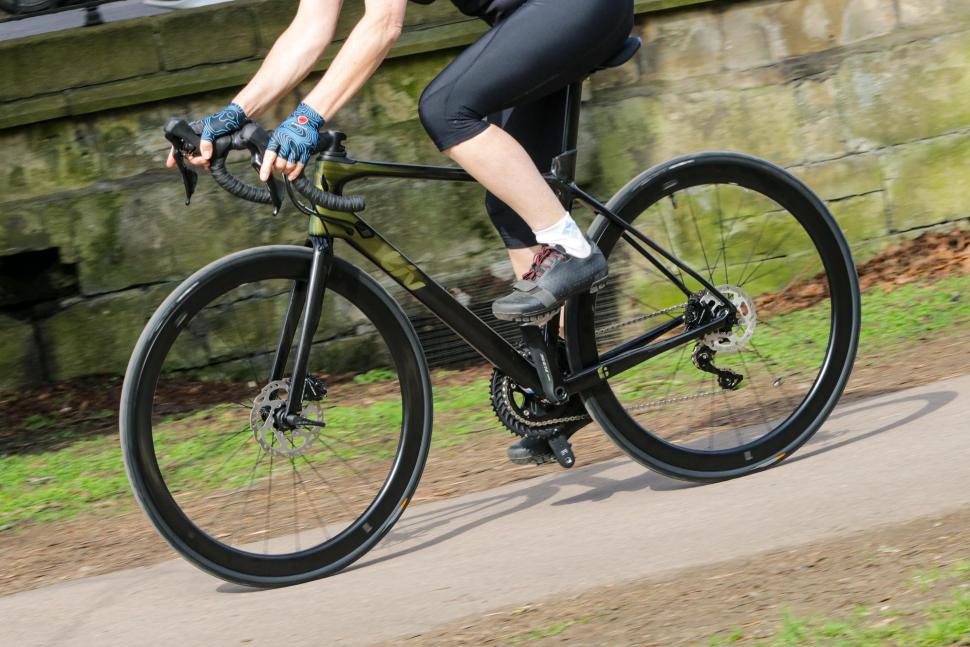
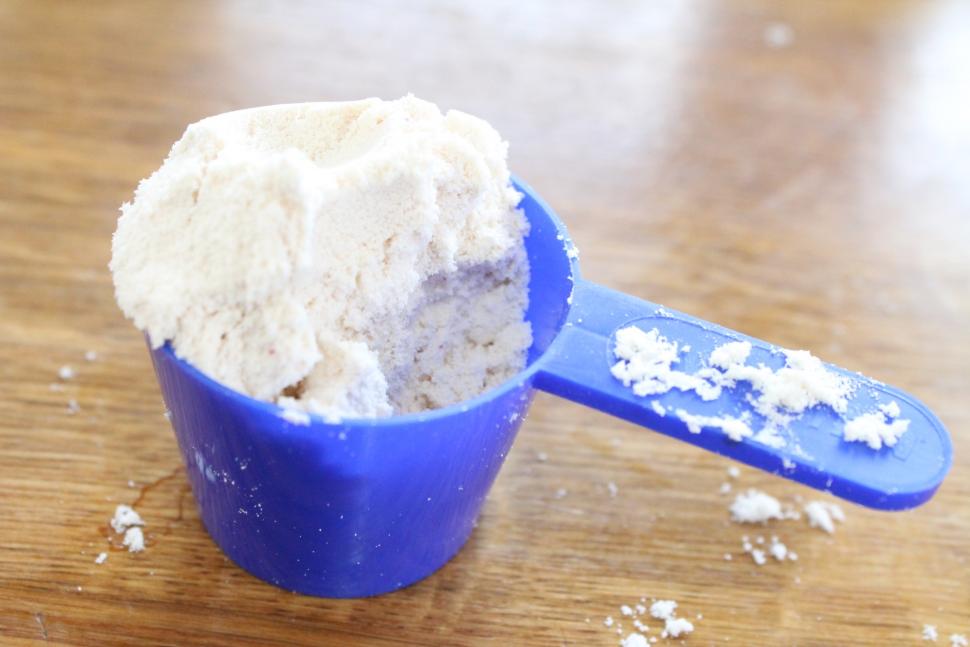
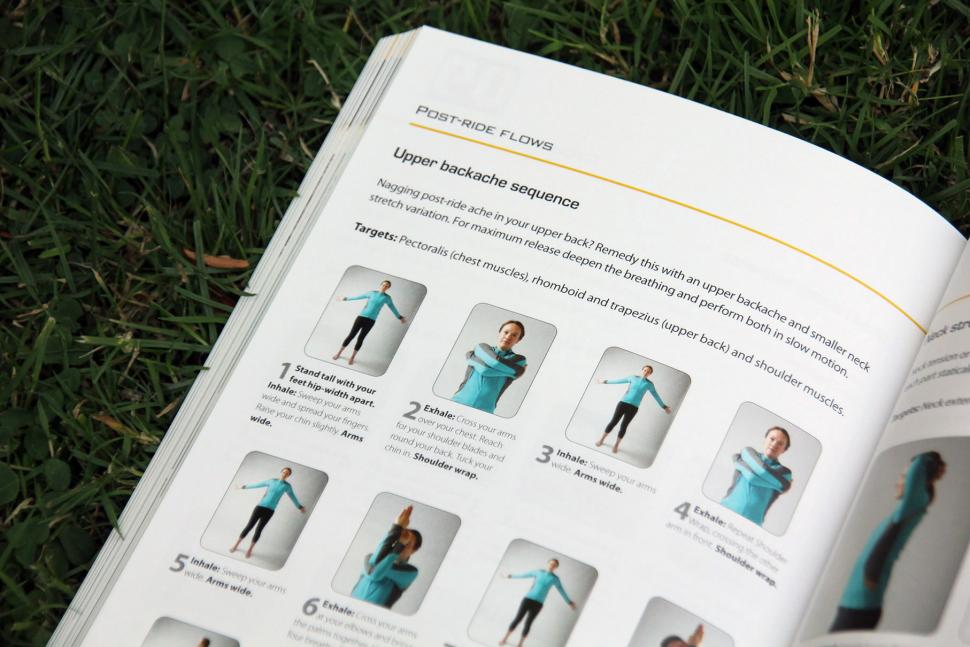
Add new comment
35 comments
It's all about minimising fatness these days for me
I'm 60 this year and have been a serious rider since 1986. At my peak I was doing over 3000 miles per year but I did 1600 last year and also walked 1200.
I still enjoy my road riding but I find that I only like to do approx 50 miles per ride or shorter with a tea stop. I get pain in my neck and left shoulder which leaves me tired. I'm riding a Trek Madone 2.1 (2013) with original wide bars and it's a lively enough ride but I feel like I could do with a damped seatpin and / or stem.
Interestingly, this recent (April 21), refereed, UK study refutes the anecdote that older people take longer to recover.
https://www.hartpury.ac.uk/news/2021/04/why-age-is-no-barrier-to-keeping...
Interesting article, but specific to resistance work. I turn 41 this year and the impact of a true VO2 or threshold session on recovery is definately harder than 10 years ago. But then I also have the accumulated sleep debt of two children and other life stress I also didn't have 10 years ago! I'd say I definately have more fatigue resistance though for longer sessions. My understanding is you can still make gains in power at lacate threshold as you get older, although vo2 max is dropping off. Pro triathletes are a good case study for strengths changing as you age, with a lot of the top ironman racers in their late thirties having moved on from the shorter course Olympic stuff they raced in their twenties.
All good points. I was late to road cycling at 34, now I'm 42 and stronger and fitter than I've ever been, but one thing that I appreciate more is the need for rest. I try to stay off the bike 3 days a week.
Also don't underestimate the importance of core exercises, over the last year or so I've persistantly suffered with lower back issues not totally down to being on the bike but since working on my core more I'm (touch wood) trouble free.
Pages